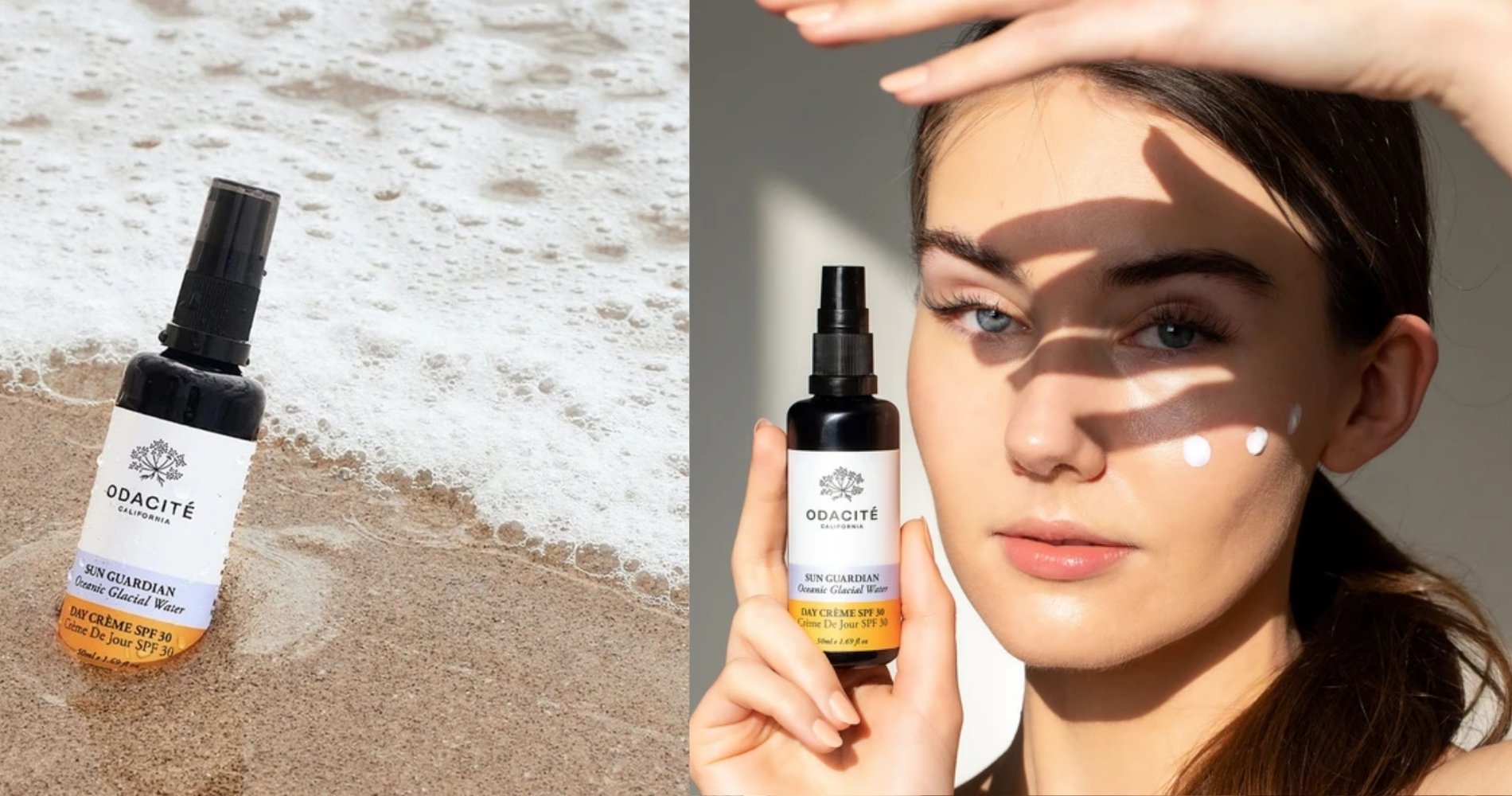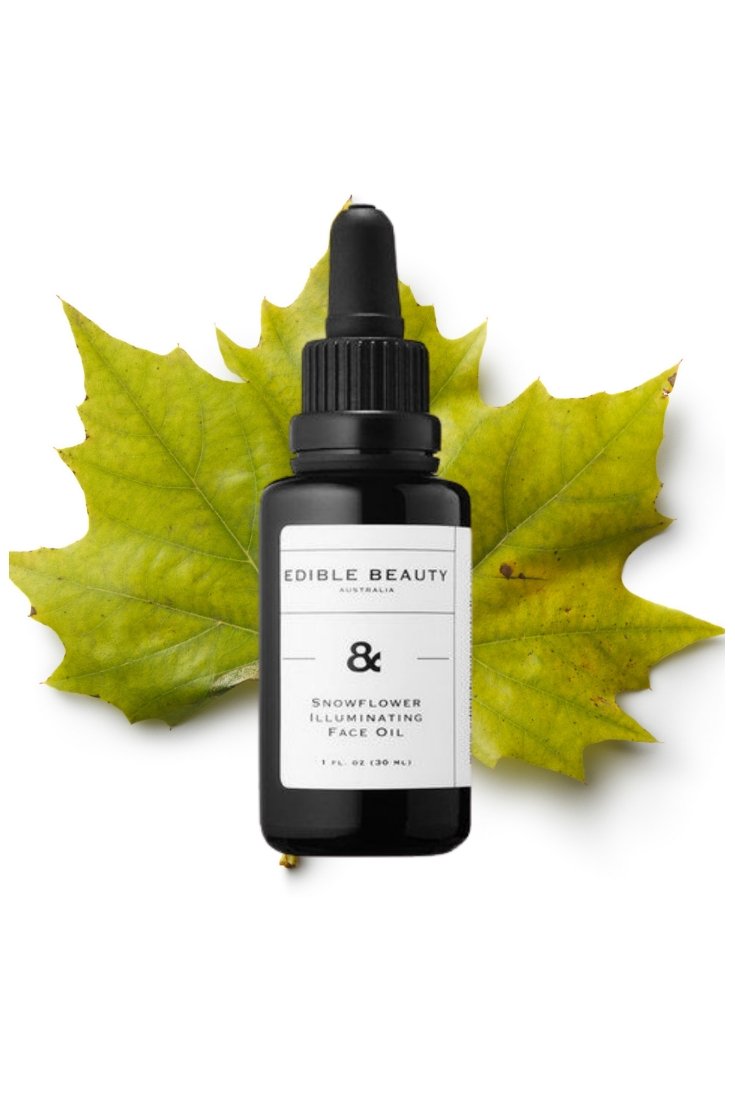They may be invisible to the naked eye, but probiotics are the biggest new topic in skincare thanks to their skin-enhancing benefits. New Zealand’s Scientific Green Beauty brand, Antipodes, has developed a probiotic water cream that harnesses a powerful strain of good bacteria to calm, clear, and hydrate the skin. It’s an innovative new development in skincare and self-care - the perfect product for 2021! So what makes probiotics so good for skin?
Calm, clear, hydrated: the lowdown on Culture
One of Elle Canada’s notable beauty products of 2021, Antipodes Culture Probiotic Night Recovery Water Cream is a uniquely textured moisturiser that harnesses the power of good bacteria, plant-based hyaluronic acid, and New Zealand native extracts for fresher, healthier-looking skin.
The certified vegan night cream delivers a lifeline to any skin type by boosting moisture levels, balancing the microbiome and helping to strengthen the skin’s barrier, optimising skin recovery overnight. Applied as part of a relaxing evening ritual, users awaken to a calm, clear, hydrated visage – making it the perfect skincare product for self-care as well as skincare. Unlike probiotic supplements, which balance gut bacteria, Culture provides a mechanism for delivering good bacteria directly to skin.
What are probiotics?
Probiotics are renowned for their health-enhancing effects on the body, but they also play a role in the health of skin. The easiest way to wrap your head around probiotics is to think of them as “good bacteria”. Good bacteria support the immune system and help to control inflammation. They live in our digestive system, where they help balance our gut flora, aiding digestion and helping us to absorb nutrients. Probiotics are living strains of these healthy bacteria.
What is the microbiome?
As the body’s largest organ, skin is our first line of defence against environmental pollutants and infection. Our skin plays host to about 1,000 species of live bacteria, viruses and fungi – a finely balanced ecosystem known as the microbiome. Our unique microbiome (sometimes referred to as skin microflora) is influenced by our genetics, the places we live, and the pollutants and products we're exposed to.
Why is the microbiome important?
A healthy microbiome enhances the skin’s natural barrier, protecting us from all the nasties out there – allergens, toxins, free radicals, photoaging, pollutants, and more. Disruption of these bacteria levels can contribute to a range of issues such as acne, eczema, dermatitis, redness, and the signs of premature aging. For example, digestive issues and autoimmune disorders are both linked to an imbalance in gut flora. A strong skin barrier is therefore an essential element of health and wellbeing.
In 2021, it’s more important than ever to cultivate healthy, resilient skin. Our exposure to environmental aggressors is relentless – external elements like pollution, wind, and UV rays, as well as indoor exposure to harsh chemical products, hand sanitisers, air conditioning, and heating, all serve to break down our delicate skin barrier and disrupt our microbiome.
To keep your microbiome healthy, balance is key - and it starts with what you’re putting on your skin.
The Benefits of Probiotics for Skin
We know that probiotics can nurture the health of our gut, control inflammation, and regulate our immune system. Now, a growing body of research shows that probiotics in skincare can support the health of our skin. There are three main reasons why probiotics are revered in skincare:
They enhance the skin barrier
Probiotics cultivate an environment of healthy bacteria that acts as a protective shield, helping to seal and enhance the skin’s natural barrier. This provides a stronger defence against environmental aggressors such as pollution, weather, UV rays, heating, air conditioning, and irritating synthetic products. A stronger barrier also helps to prevent trans-epidermal moisture loss, which means skin retains water for longer. The result? Plumped, fresh, hydrated skin.
They balance the microbiome
Pollution and harsh skincare products can mess up the balance of our skin microflora, allowing bad bacteria to take over and blemished, clogged skin to ensue. Probiotic skincare cultivates a balanced microbiome by helping to keep your good bacteria at healthy levels. This fine-tuned balance helps to control your skin’s pH levels and oil production, promoting clearer skin. With a calm, clear canvas on which to act, your beauty regime can be more effective.
They calm the skin
Many common skin disorders have their root in inflammation – from eczema and atopic dermatitis to rosacea and acne. Probiotics have been noted for their anti-inflammatory properties, having a calming effect and reducing levels of roughness and redness. They may also help to defend against the effects of photoaging in skin.
Prebiotics, probiotics and postbiotics. What's the difference?
With these terms being used interchangeably, you’d be forgiven for being a little confused. The term “probiotics” is often used as an umbrella term for prebiotics, probiotics, and postbiotics; but their functions are very different. Let’s break it down.
Prebiotics
Think of prebiotics as food for probiotics. The fibres in certain plants, fruits, vegetables, whole grains, and soybeans are all sources of prebiotics. The healthy bacteria that live in your digestive system feed off this non-digestible fibre.
Probiotics
Probiotics are live bacteria and yeasts that live naturally in the body. Pure probiotics have a short shelf life. They must be stored at low temperatures, which is why you’ll find your supplements in the pharmacy fridge. Because they are so hard to preserve, probiotics aren't suitable for skincare. That’s where postbiotics come in.
Postbiotics
Also referred to as “non-live probiotics,” postbiotics are a stable form of probiotic, developed through a fermentation process using non-living bacteria. These powerful compounds of good bacteria are stable, so they can be incorporated into beauty formulations.
Kalibiome AGE Probiotic: the special ingredient in Culture
Culture utilises an innovative development in anti-aging and skin regeneration. Kalibiome AGE Probiotic is a natural, non-live bacteria (also known as a “postbiotic”) that helps to seal the skin’s epidermal layers, reducing water loss and protecting against environmental irritants like pollution. In simple terms, it is “good” bacteria that helps balance the skin’s “bad” bacteria! Culture’s water-charged formulation provides a mechanic to deliver this good bacteria to skin.
How is Kalibiome sourced?
It starts with an initial sample of a very small amount of bacteria, extracted from human skin cells. This small amount is then cultured, or grown, into a much larger number of bacteria. These bacteria are then put through a patented double fermentation process, to remove any toxins and other bacterial fragments – leaving good bacteria in the end compound.
Natural and clean
This is a 100% natural and clean process, with no synthetic chemical growth mediums added. The additives used are mannitol (sugar alcohol) and maltodextrin (polysaccharide starch): natural additions to help with fermentation. The resulting compound is non-live, natural, and free of toxins.
The science behind Kalibiome AGE
Scientific testing and clinical trials show how Kalibiome AGE Probiotic can have an anti-aging and skin-enhancing effect. Because Kalibiome AGE is a postbiotic, it actively promotes the regulation of bacteria, increasing some bacterial content and decreasing others. In other words, it equalises or populates the good bacteria on the skin.
In-vivo testing has shown that this good bacteria can help to reduce the effects of photo-aging in the skin, reducing wrinkle depth and redness while enhancing elasticity. In-vitro investigations show that Kalibiome AGE increases hydration by stimulating the production of hyaluronic acid in skin cells.
Kalibiome AGE also helps to boost Type I collagen, supporting firmer skin and fewer fine lines. Collagen is the main protein found in the skin that, along with elastin, is integral to skin elasticity and the prevention of wrinkles. Scientific tests for Kalibiome AGE Probiotic were carried out on fibroblast skin cells, which are the cells involved in the production of collagen and elastin. Kalibiome was shown to boost the fibroblast repairing process after these cells were damaged in-vitro.
If postbiotics are non-live, what makes them so effective?
Bacteria are beneficial for the skin and human body because of the actives (postbiotics) they produce – not because of their structure or living status. Therefore, although Kalibiome AGE is a non-live postbiotic, the strain contains active benefits for skin.
One way to understand this is by comparing probiotics to coffee. Coffee starts life as a plant – from the seeds of berries from the species Coffea, to be exact - but we don’t eat the plant to get the benefits. The coffee that makes its way to our kitchen cupboards is an extract. That extract is obtained through specific techniques which retain the concentrated active ingredients (caffeine) and optimise the taste.
Probiotics and posbiotics (non-live probiotics) use the same principle. Postbiotics are like the coffee obtained through specific techniques. The process concentrates all the required and useful substances, and removes those that are unnecessary and potentially toxic. For that reason, non-living postbiotics are actually superior to living bacteria!
Even living probiotics can inflame the skin, because they contain the bacterial cell wall, which can hold antigens and toxins. Kalibiome AGE Postbiotics have zero side effects and do not trigger inflammation. They contain no antigens, no bacterial wall, and no toxins in their composition.
What are the other ingredients in Culture?
Probiotics aren’t the only skin-loving, 100% natural ingredient in Culture. The cloud-soft formulation contains a host of plant-based ingredients, each one selected for its ability to hydrate and support healthy-looking skin.
Plant hyaluronic acid
The cream’s intensive hydration qualities come from hyaluronic acid – a molecule renowned in the beauty world because of its ability to draw moisture into the skin and plump up the complexion. Occurring naturally in the human body to keep joints lubricated and skin hydrated, hyaluronic acid is a humectant and can hold up to 1000 times its molecular weight in water! Antipodes’ uses cruelty-free and toxin-free alternatives to synthetic ingredients, which is why the brand uses a completely natural form of hyaluronic acid, sourced from the fermentation of vegetables.
New Zealand bioactive extracts
Native New Zealand ingredients are rich in water-boosting properties as well as antioxidants. Mamaku black fern, from New Zealand’s iconic fern, contains glycosides (natural sugars) that contribute to the renewal of the skin’s surface. Harakeke flax gel is sourced from the roots of New Zealand’s native flax. It helps to lock in the skin’s natural moisture and also has a calming and soothing effect on the skin. Meadowfoam, a nourishing plant oil pressed from the seeds of flowers grown in the New Zealand South Island region of Canterbury, provides intense moisturising and rejuvenating benefits.
Ultra-clean
Unlike other water creams, Culture is 100% natural origin, certified vegan and ultra-clean – which means it’s completely free of toxic ingredients. The formula achieves the same silky skin-feel of traditional water creams by using natural ingredients. For example, in place of polymers (used in formulations to improve consistency), Culture features an all-natural substitute originating from soy and sunflower. Meadowfoam has an excellent long-chain fatty acid profile (Omegas 3, 6 and 9) which adds a pleasing silicone feel to formulations. Innovations like these make Culture unique in market and so good for skin.
When should Culture be applied?
Night-time is when the skin restores, rests, and repairs, which is why Culture Probiotic Night Recovery Water Cream is specifically formulated for evening application. It delivers good bacteria and water-boosting New Zealand bioactives to your skin, which get to work while you sleep. The recovery of DNA-damaged skin cells peaks at night, and it’s also when melatonin – associated with wound healing and the suppression of ultraviolet (UV) damage – is at its highest. Our skin loses more moisture in the evening and throughout the night, which means applying moisturisers before you go to bed could be critical in keeping your skin plump and hydrated.
A complete sensory experience
Of course, your skin is rewarded by waiting until bedtime! To transform an ordinary night skincare routine into a relaxing ritual, Culture captivates all the senses. Every element – from the cream’s dreamy lilac colouring and cloud-soft texture, to the elegant indigo packaging and pure plant fragrance of deep, fresh rose – has been selected with stressed skin in mind. It's a cream that provides balance to skin, self and soul.
How should Culture be applied?
Apply generous amounts each night as the last thing you do before bed. Don’t neglect your neck and décolletage - these areas are particularly prone to showing the signs of stress and aging, as the skin is thinner. Massage the cream gently into your skin using slow, upward strokes. Then, switch off for the night – no screens allowed! Take time to rest and reflect while the soft cream sits delicately on your skin. It’s like immersing skin in a glass of water, hydrating and restoring while you sleep.
Your perfect probiotic skincare regime
Your daily regime is the most effective way to experience the benefits of probiotics for skin. A natural night cream like Culture delivers Kalibiome AGE directly to your skin’s surface – and when used as part of a nourishing routine, it’s an effective way to achieve healthy-looking skin. Our perfect probiotic skincare regime features nourishing, calming, and hydrating products with all-natural ingredients.
Step 1: Cleanser
Start your night-time ritual by cleansing skin with warm water and a gentle cleanser. We recommend a cleanser that is dermatologically approved for sensitive skin, such as Antipodes Grace Gentle Cream Cleanser & Makeup Remover.
Step 2: Mask
Once a week, a natural mud mask like Antipodes Halo Skin-Brightening Facial Mud Mask is the ideal treatment for stressed skin at night. Geothermal mud draws out impurities and decongests the skin as you relax for a rare fifteen minutes.
Step 2: Serum
Once skin is cleansed, massage your favourite serum into your face and neck with gentle upward strokes. For particularly stressed skin, a facial oil like Antipodes Divine Face Oil Rosehip & Avocado Oil provides much-needed nourishment.
Step 3: Night cream
Follow with a generous application of Antipodes Culture Probiotic Night Recovery Water Cream. It delivers good bacteria, plant hyaluronic acid, and water-boosting bioactives to your skin while you sleep. Sweet dreams indeed.
Who knew there was so much power packed into one tiny ingredient? Good bacteria should be a mainstay of your skincare routine, as it helps balance your microbiome, strengthen your skin barrier, and keep skin healthy and happy. Gentle and suitable for all skin types, Culture Probiotic Night Recovery Water Cream is free from toxic ingredients and certified vegan by the UK Vegetarian Society. Lift the lid and awaken each day to a calm, clear, hydrated visage.
Scientific study referenced:
Kalibiome probiotics/postbiotics 600: clinically shown to revitalise extracellular matrix.


